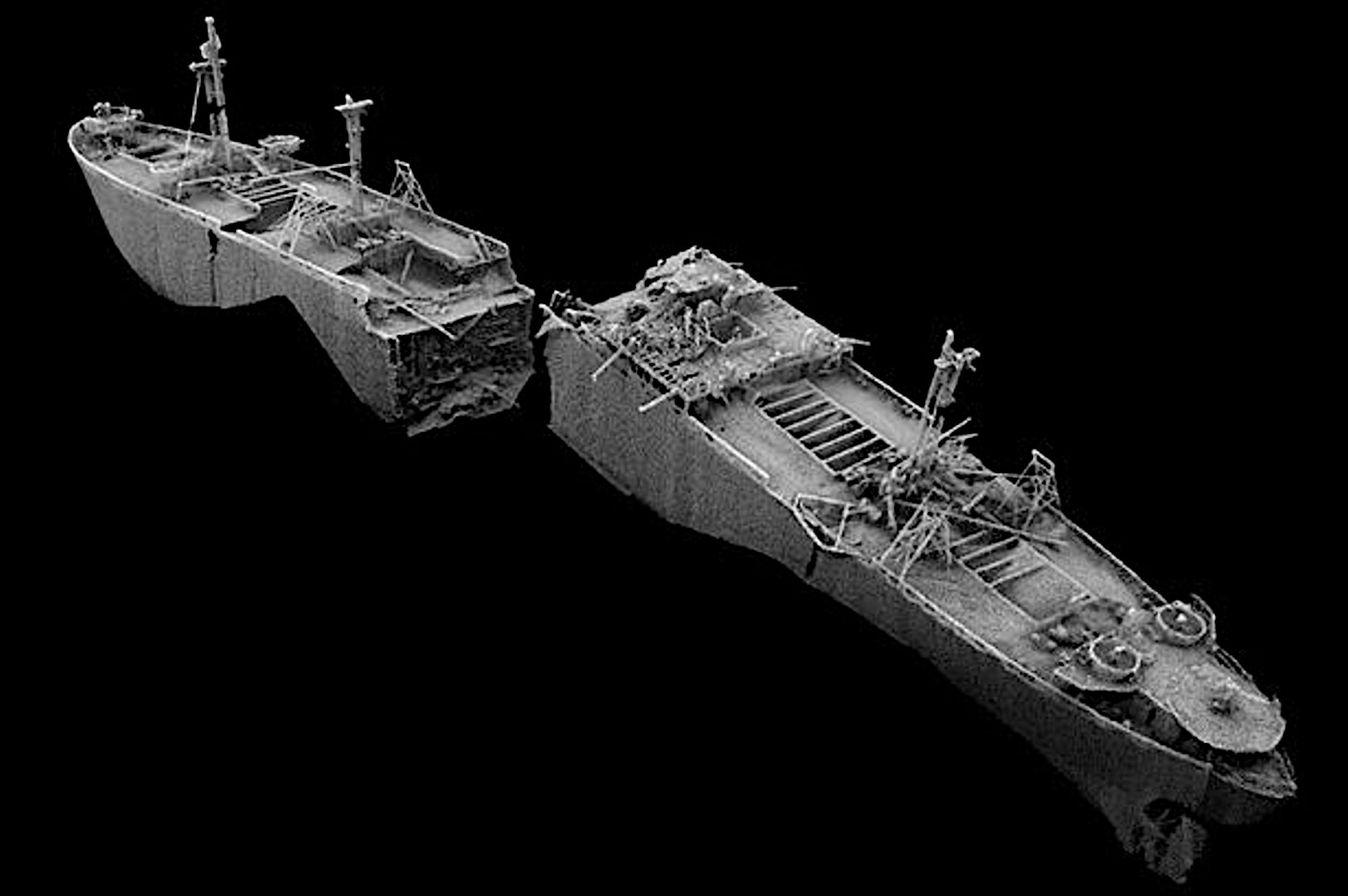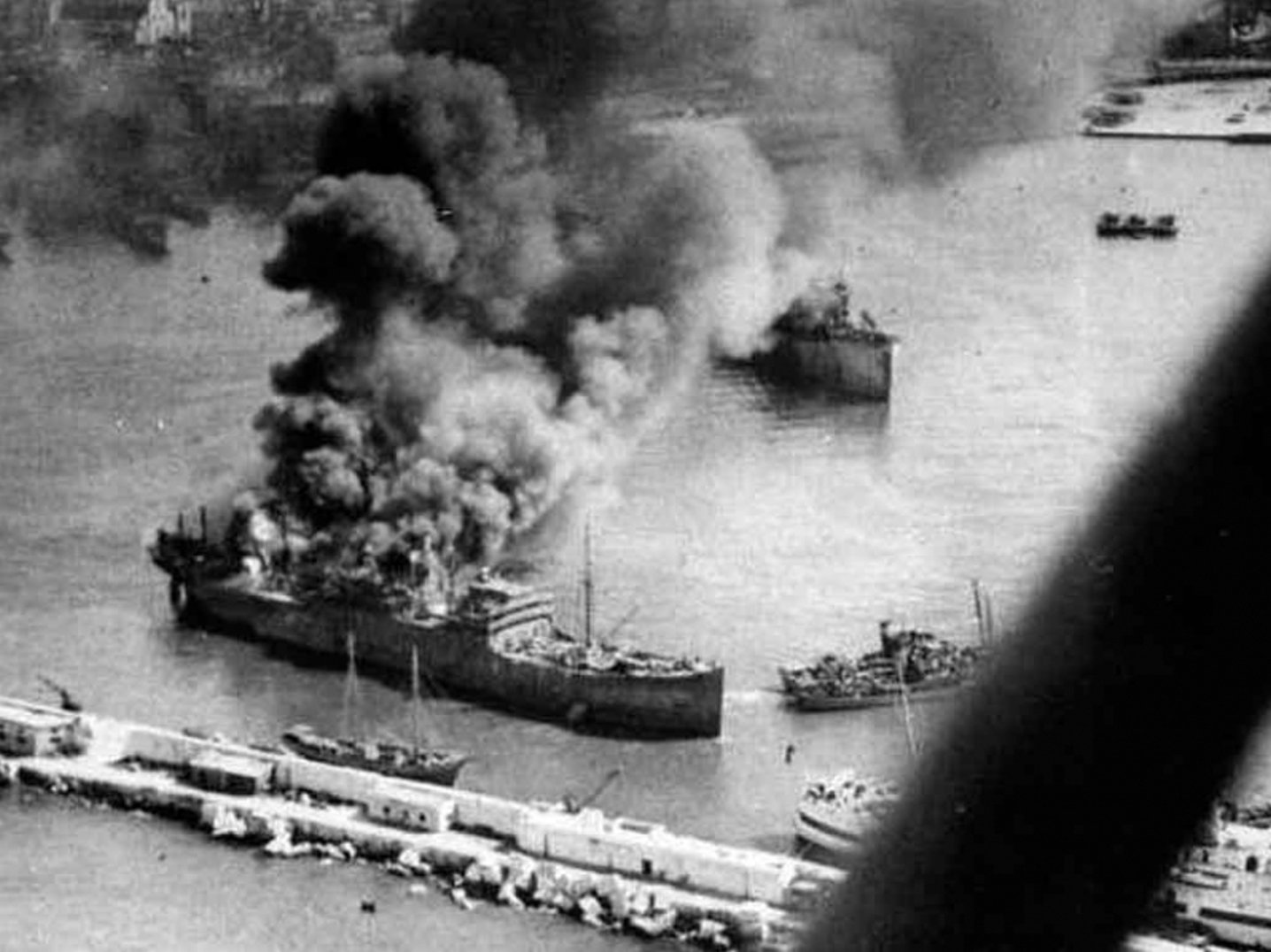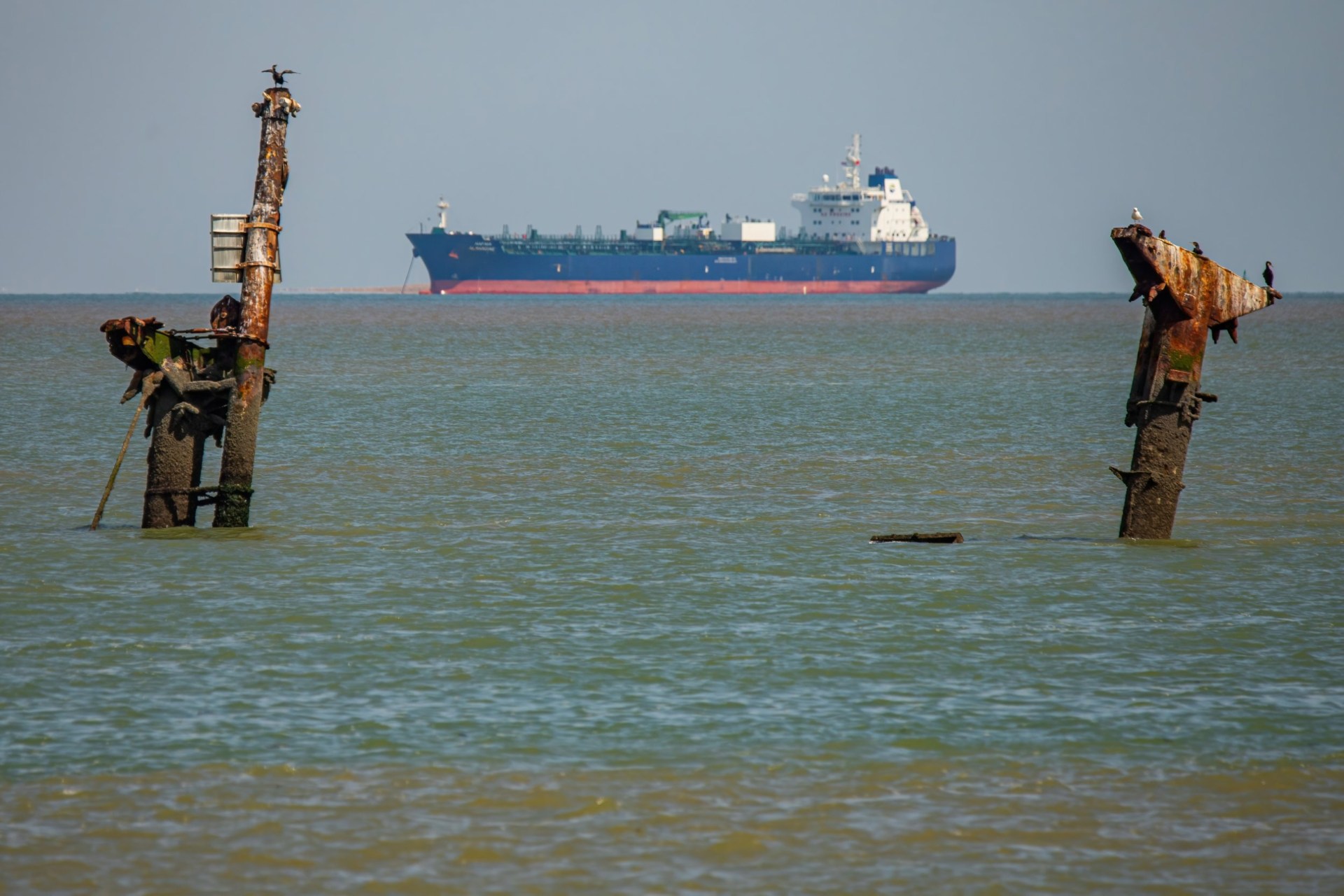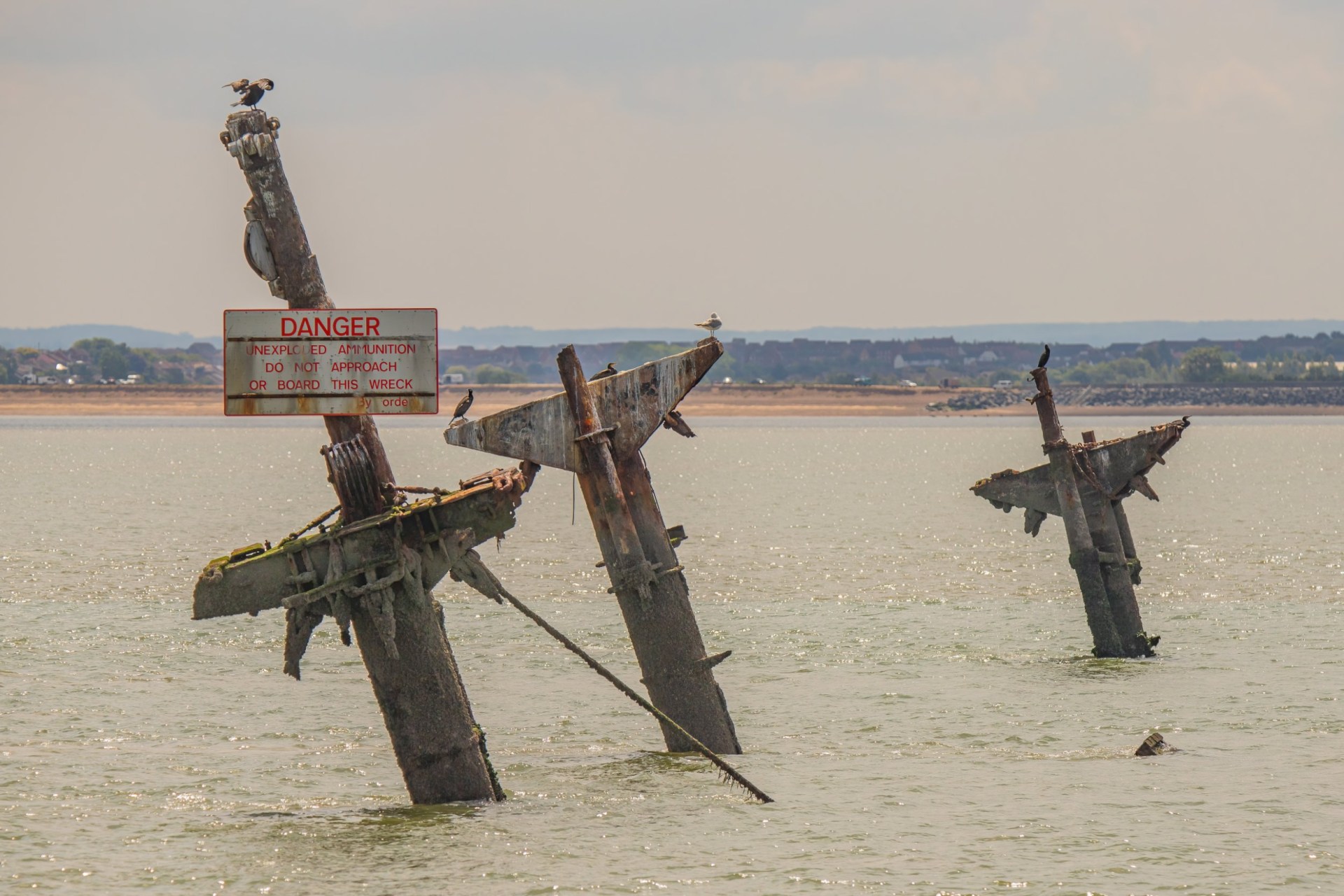
An Essex Councillor has stated it’s high time for the government to 'be transparent' regarding why a ‘doomsday wreck’ The safety improvements in the Thames have been postponed once more.
The SS Richard Montgomery — dubbed the 'Doomsday Wreck' — went down in the Thames Estuary close to Sheerness in Kent and Southend-on-Sea in Essex in 1944.
Following 78 years beneath the waves, the World War II Liberty Ship has suffered significant corrosion, raising worries about its structural integrity. ship’s three masts — which can still be observed protruding above the water’s surface — might topple and land on the unexploded ordnance below, potentially causing a 'devastating' explosion.
A plan to take down the towers had faced multiple delays, however, it was revealed last April that the task would be finished within twelve months at long last.
Currently, as yet another deadline goes by without any action being taken, the situation remains unchanged. government has been asked to 'open up' about the cause of it.
The councillor for Southend, Stephen Aylen, whose area is merely eight miles away from the wreckage, stated: "Why haven't they taken these things out? That's the main question we need to address."
'What I might consider is that they haven't removed them because there's some problem being hidden. Could there be something about the wreckage that they're trying not to disclose?'
What's contained within? What exactly is aboard that vessel? The moment has arrived for transparency.

Mr Aylen had earlier proposed that the wreckage might contain an additional 'much darker' load - mustard gas.
Another Liberty Ship, the SS John Harvey, was transporting a concealed cargo of lethal gas when it sank near Bari. Italy , in December 1943.
The dangerous load broke free, resulting in numerous fatalities and leaving hundreds wounded.
Mr Aylen enquired, "Could there be something extremely serious included?"
'The public should understand: we must have some transparency about what will truly occur with this vessel.'
Latest London news
- Eleven individuals were rushed to the hospital following an 'electric bike fire' that tore through a high-rise building.
- As a food writer, I had never come across this U.S. chain in London before.
- Within the proposals to transform London Liverpool Street station
For the most recent updates from the capital, head over to 'sHeaderCode London news hub .
How mustard gas affects the human body
- Contact with sulfur mustard typically does not prove fatal.
- Mustard gas can be odorless, which means victims frequently remain unaware that they have been exposed to it.
- Based on how severe the contact is, indications might not show up for as long as 24 hours. Individuals can vary in their sensitivity to sulfur mustard; some may experience signs and symptoms earlier than others.
-
Sulfur mustard may have the following impacts on particular bodily regions:
- Skin Redness and itchiness of the skin might appear between two hours and 48 hours following contact with the irritant. This could later develop into blisters that turn yellowish.
- Eyes Irritation, pain, swelling, and tearing might happen between three to twelve hours after a low to medium exposure. In case of intense contact, indications and symptoms could appear within just one to two hours. These can encompass all the effects seen with minor or average exposures along with heightened sensitivity to light, extreme discomfort, or even temporary loss of sight for up to ten days.
- Respiratory tract : A runny nose, sneezing, hoarseness, bleeding from the nose, facial pain due to sinuses, difficulty breathing, and persistent cough appearing between 12 to 24 hours after a minor contact, and within two to four hours following significant exposure.
- Digestive tract : Stomach ache, loose stools, high temperature, queasiness, and retching.
- Bone marrow Decreased production of blood cells or reduced numbers of red or white blood cells and platelets can result in weakness, bleeding issues, and infections.
Centers for Disease Control and Prevention
A 1970 report from the Royal Military College of Science forecasted the consequences should the entire stockpile of explosives explode simultaneously.

This could release a plume of water and rubble reaching up to 3,000 meters into the air along with a five-meter tidal wave that would submerge the adjacent area of Sheerness, according to the report.
Specialists are concerned that the towers, situated in one of the globe's most trafficked sea lanes, could be at risk of being hit accidentally.
Addressing last year, David Alexander, who is a professor specializing in emergency planning and management at University College London, spoke. London , mentioned this as 'the greatest danger'.
'The restricted area is 200 meters away from a key shipping route used by big container vessels, as well as far more critically, by LNG carriers,' he clarified.
He mentioned the case of the Mare Altum, a chemical tanker registered under the Danish flag, which was heading towards the wreckage but was rerouted just in time.
In May 1980, it was one of two close calls during a single week, occurring only days after the British-registered MV Fletching had come within 15 meters of the wreckage.
Mr Aylen had similar concerns: 'We spotted the container ship that collided with the bridge in America, which raises concerns for us.' If something like that can occur with a bridge that has stood there for ages, then why couldn't a vessel navigate through some masts protruding above the water?
'Particularly with these enormous container ships navigating the Thames.'
Boats have gone into the pier before!

Daniel Cowan, who leads Southend’s Labour-controlled council, stated he had not been informed about any reasons for the hold-up: “I have received no direct information, however generally speaking, we are eager to get the work completed and ensure the estuary is secure.”
A study released earlier last year indicated evidence of a recent decline in the vessel.
It now appears that safety measures will be pushed back by an additional year.
The Ministry of Transport, which holds the responsibility, stated that they will conduct further surveys of the wreckage and develop a strategy alongside an authorized contractor to dismantle the masts.
The ministry expected this to occur within one year, however, they stated their intention was to dismantle the masts at the earliest opportunity.
A representative stated: "Ensuring the safety of the public and minimizing risks associated with the SS Richard Montgomery remains our top priority. Specialists are currently conducting essential preliminary tasks to facilitate any necessary physical interventions with the wreckage."
'We continuously keep an eye on the location around the clock and carry out thorough examinations to evaluate the state of the wreckage.'
The ministry had earlier stated that there has 'never been any proof' indicating the presence of mustard gas on the shipwreck.
Contact our news team by sending an email to webnews@.co.uk .
To find more tales similar to this, check our news page .
Keep abreast of the topics everyone is discussing by subscribing to 's News Updates newsletter.